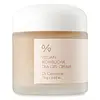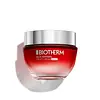What's inside
What's inside
 Key Ingredients
Key Ingredients

 Benefits
Benefits

 Concerns
Concerns

No concerns
 Ingredients Side-by-side
Ingredients Side-by-side

Water
Skin ConditioningGlycerin
HumectantMethylpropanediol
Solvent1,2-Hexanediol
Skin ConditioningDicaprylyl Ether
EmollientGlycereth-26
HumectantNiacinamide
SmoothingButylene Glycol
HumectantDipropylene Glycol
HumectantCamellia Sinensis Leaf Extract
AntimicrobialSaccharomyces Ferment Filtrate
HumectantEclipta Prostrata Leaf Extract
Skin ConditioningLaminaria Japonica Extract
Skin ProtectingHydroxyacetophenone
AntioxidantCamellia Sinensis Leaf Water
MaskingPolyquaternium-51
Skin ConditioningHelianthus Annuus Seed Oil Unsaponifiables
EmollientEthylhexylglycerin
Skin ConditioningFructooligosaccharides
HumectantBeta-Glucan
Skin ConditioningHydrogenated Lecithin
EmulsifyingCarbomer
Emulsion StabilisingTheobroma Cacao Seed Extract
AntioxidantDextrin
AbsorbentPhellinus Linteus Extract
Skin ConditioningArctium Lappa Root Extract
Skin ConditioningAmmonium Acryloyldimethyltaurate/Vp Copolymer
Xanthan Gum
EmulsifyingTromethamine
BufferingHydrolyzed Hyaluronic Acid
HumectantSchisandra Chinensis Fruit Extract
Skin ConditioningRosmarinus Officinalis Leaf Oil
MaskingTocopherol
AntioxidantWater, Glycerin, Methylpropanediol, 1,2-Hexanediol, Dicaprylyl Ether, Glycereth-26, Niacinamide, Butylene Glycol, Dipropylene Glycol, Camellia Sinensis Leaf Extract, Saccharomyces Ferment Filtrate, Eclipta Prostrata Leaf Extract, Laminaria Japonica Extract, Hydroxyacetophenone, Camellia Sinensis Leaf Water, Polyquaternium-51, Helianthus Annuus Seed Oil Unsaponifiables, Ethylhexylglycerin, Fructooligosaccharides, Beta-Glucan, Hydrogenated Lecithin, Carbomer, Theobroma Cacao Seed Extract, Dextrin, Phellinus Linteus Extract, Arctium Lappa Root Extract, Ammonium Acryloyldimethyltaurate/Vp Copolymer, Xanthan Gum, Tromethamine, Hydrolyzed Hyaluronic Acid, Schisandra Chinensis Fruit Extract, Rosmarinus Officinalis Leaf Oil, Tocopherol
Water
Skin ConditioningGlycerin
HumectantDicaprylyl Carbonate
EmollientAlcohol Denat.
AntimicrobialSimmondsia Chinensis Seed Oil
EmollientCocos Nucifera Oil
MaskingPersea Gratissima Oil
Skin ConditioningMangifera Indica Seed Butter
Skin ConditioningHydrogenated Coco-Glycerides
EmollientPentylene Glycol
Skin ConditioningCetearyl Alcohol
EmollientArachidyl Alcohol
EmollientCopernicia Cerifera Cera
EmollientGardenia Taitensis Flower
Skin ConditioningPrunus Armeniaca Kernel Oil
MaskingAlaria Esculenta Extract
Skin ProtectingCarrageenan
Tin Oxide
AbrasiveStearic Acid
CleansingCeramide NP
Skin ConditioningSqualane
EmollientCarbomer
Emulsion StabilisingArachidyl Glucoside
EmulsifyingCalcium Chloride
AstringentBehenyl Alcohol
EmollientCeteareth-20
CleansingCetearyl Glucoside
EmulsifyingSodium Hyaluronate
HumectantSodium Hydroxide
BufferingSodium Lactate
BufferingSodium Stearate
CleansingSodium Stearoyl Glutamate
CleansingSilica
AbrasiveMyristic Acid
Cleansing2-Oleamido-1,3-Octadecanediol
Skin ConditioningPalmitic Acid
EmollientPalmitoyl Tetrapeptide-7
Skin ConditioningPalmitoyl Tripeptide-1
Skin ConditioningAdenosine
Skin ConditioningPhenylethyl Resorcinol
AntioxidantAmmonium Acryloyldimethyltaurate/Steareth-25 Methacrylate Crosspolymer
Emulsion StabilisingHydroxypalmitoyl Sphinganine
Skin ConditioningCaprylic/Capric Triglyceride
MaskingCaprylyl Glycol
EmollientVitreoscilla Ferment
Skin ConditioningAcetyl Dipeptide-1 Cetyl Ester
Skin ConditioningSynthetic Fluorphlogopite
Polysorbate 20
EmulsifyingButylene Glycol
HumectantTocopherol
AntioxidantTocopheryl Acetate
AntioxidantPentaerythrityl Tetra-Di-T-Butyl Hydroxyhydrocinnamate
AntioxidantSalicylic Acid
MaskingMica
Cosmetic ColorantCI 77163
Cosmetic ColorantCI 77491
Cosmetic ColorantCI 77891
Cosmetic ColorantParfum
MaskingWater, Glycerin, Dicaprylyl Carbonate, Alcohol Denat., Simmondsia Chinensis Seed Oil, Cocos Nucifera Oil, Persea Gratissima Oil, Mangifera Indica Seed Butter, Hydrogenated Coco-Glycerides, Pentylene Glycol, Cetearyl Alcohol, Arachidyl Alcohol, Copernicia Cerifera Cera, Gardenia Taitensis Flower, Prunus Armeniaca Kernel Oil, Alaria Esculenta Extract, Carrageenan, Tin Oxide, Stearic Acid, Ceramide NP, Squalane, Carbomer, Arachidyl Glucoside, Calcium Chloride, Behenyl Alcohol, Ceteareth-20, Cetearyl Glucoside, Sodium Hyaluronate, Sodium Hydroxide, Sodium Lactate, Sodium Stearate, Sodium Stearoyl Glutamate, Silica, Myristic Acid, 2-Oleamido-1,3-Octadecanediol, Palmitic Acid, Palmitoyl Tetrapeptide-7, Palmitoyl Tripeptide-1, Adenosine, Phenylethyl Resorcinol, Ammonium Acryloyldimethyltaurate/Steareth-25 Methacrylate Crosspolymer, Hydroxypalmitoyl Sphinganine, Caprylic/Capric Triglyceride, Caprylyl Glycol, Vitreoscilla Ferment, Acetyl Dipeptide-1 Cetyl Ester, Synthetic Fluorphlogopite, Polysorbate 20, Butylene Glycol, Tocopherol, Tocopheryl Acetate, Pentaerythrityl Tetra-Di-T-Butyl Hydroxyhydrocinnamate, Salicylic Acid, Mica, CI 77163, CI 77491, CI 77891, Parfum
 Reviews
Reviews

Ingredients Explained
These ingredients are found in both products.
Ingredients higher up in an ingredient list are typically present in a larger amount.
Butylene Glycol (or BG) is used within cosmetic products for a few different reasons:
Overall, Butylene Glycol is a safe and well-rounded ingredient that works well with other ingredients.
Though this ingredient works well with most skin types, some people with sensitive skin may experience a reaction such as allergic rashes, closed comedones, or itchiness.
Learn more about Butylene GlycolCarbomer is a polymer of acrylic acid. Its main role is to create a gel consistency.
A high amount of carbomer can cause pilling or balling up of products. Don't worry, most products contain 1% or less of carbomer.
Glycerin is already naturally found in your skin. It helps moisturize and protect your skin.
A study from 2016 found glycerin to be more effective as a humectant than AHAs and hyaluronic acid.
As a humectant, it helps the skin stay hydrated by pulling moisture to your skin. The low molecular weight of glycerin allows it to pull moisture into the deeper layers of your skin.
Hydrated skin improves your skin barrier; Your skin barrier helps protect against irritants and bacteria.
Glycerin has also been found to have antimicrobial and antiviral properties. Due to these properties, glycerin is often used in wound and burn treatments.
In cosmetics, glycerin is usually derived from plants such as soybean or palm. However, it can also be sourced from animals, such as tallow or animal fat.
This ingredient is organic, colorless, odorless, and non-toxic.
Glycerin is the name for this ingredient in American English. British English uses Glycerol/Glycerine.
Learn more about GlycerinTocopherol (also known as Vitamin E) is a common antioxidant used to help protect the skin from free-radicals and strengthen the skin barrier. It's also fat soluble - this means our skin is great at absorbing it.
Vitamin E also helps keep your natural skin lipids healthy. Your lipid skin barrier naturally consists of lipids, ceramides, and fatty acids. Vitamin E offers extra protection for your skin’s lipid barrier, keeping your skin healthy and nourished.
Another benefit is a bit of UV protection. Vitamin E helps reduce the damage caused by UVB rays. (It should not replace your sunscreen). Combining it with Vitamin C can decrease sunburned cells and hyperpigmentation after UV exposure.
You might have noticed Vitamin E + C often paired together. This is because it is great at stabilizing Vitamin C. Using the two together helps increase the effectiveness of both ingredients.
There are often claims that Vitamin E can reduce/prevent scarring, but these claims haven't been confirmed by scientific research.
Learn more about TocopherolWater. It's the most common cosmetic ingredient of all. You'll usually see it at the top of ingredient lists, meaning that it makes up the largest part of the product.
So why is it so popular? Water most often acts as a solvent - this means that it helps dissolve other ingredients into the formulation.
You'll also recognize water as that liquid we all need to stay alive. If you see this, drink a glass of water. Stay hydrated!
Learn more about Water